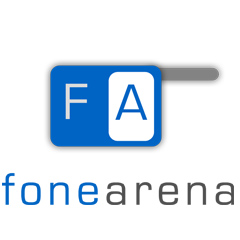
TRAI has announced that telecom service providers (TSPs) have published mobile network coverage maps on their websites, following its regulatory mandate aimed at enhancing transparency and helping users make informed choices.
This is in line with The Standards of Quality of Service of Access (Wirelines and Wireless) and Broadband (Wireline and Wireless) Service Regulations, 2024 (06 of 2024), notified on August 2, 2024. These rules came into effect on October 1, 2024, and apply to both wireline and wireless access and broadband services.
As per the regulation, wireless service providers were required to publish service-wise geospatial coverage maps by April 1, 2025. TRAI issued detailed guidelines under Direction No. RG-17/(3)/2022-QoS, dated November 22, 2024, to ensure uniformity and timely rollout.
Technical Guidelines and Display Rules
TRAI’s direction mandates that coverage maps be based on either actual network data or industry-standard prediction tools verified against real signal strength. Specific minimum signal thresholds for each technology were set as follows:
- 2G: RSSI ≥ -95 dBm
- 3G: RSCP ≥ -99 dBm
- 4G / 5G: RSRP ≥ -110 dBm
Any area below these thresholds at 50% cell loading is to be marked as a no-coverage zone. Service providers must also meet a benchmark of at least 99% availability of these maps for working cells from April 1, 2025.
Maps must use a standardized color scheme and show a unified view by default, with preference to higher-generation networks (e.g., 5G). The opacity adjusts with zoom to improve visibility. Display of base station or cell location is optional.
Key User Features and Map Updates
Each TSP must provide the following essential features:
- Toggle to view 2G, 3G, 4G, or 5G individually
- Search by region name or coordinates
- Zoom, pan, full-screen view, map orientation, and “My Location”
- Clear legends for signal strength and technology
- A feedback tool to report issues or upload signal test results
Coverage maps must be updated promptly following any changes to the network (e.g., new cell sites or optimization), and no later than three months from the month of change. The last update date must be shown, and change logs should be maintained for audit purposes.
Access and TRAI Integration
To ensure visibility, a direct link (with logo) to the map must be placed on each TSP’s homepage, along with a ‘Coverage Map’ tab in the main navigation bar. Clicking either must lead directly to the map page.
TSPs are also required to provide secure APIs or standard GIS mechanisms to TRAI for future integration with a national-level unified coverage map.
Broader Use and Public Access
TRAI noted that coverage maps benefit not only subscribers but also serve as a national reference for evaluating mobile service availability. They can support planning of digital infrastructure projects and help identify areas that may require policy or regulatory attention.
| S. No. | TSP | Coverage Map Link |
|---|---|---|
| 1 | Bharti Airtel | https://www.airtel.in/wirelesscoverage/?icid=footer |
| 2 | BSNL | Yet to be published |
| 3 | MTNL | Yet to be published |
| 4 | RJIL (Jio) | https://www.jio.com/selfcare/coverage-map/ |
| 5 | Vodafone Idea | https://www.myvi.in/vicoverage |
All coverage maps are now available on the respective TSP websites, and TRAI has also listed the links on its official portal for easier public access.
